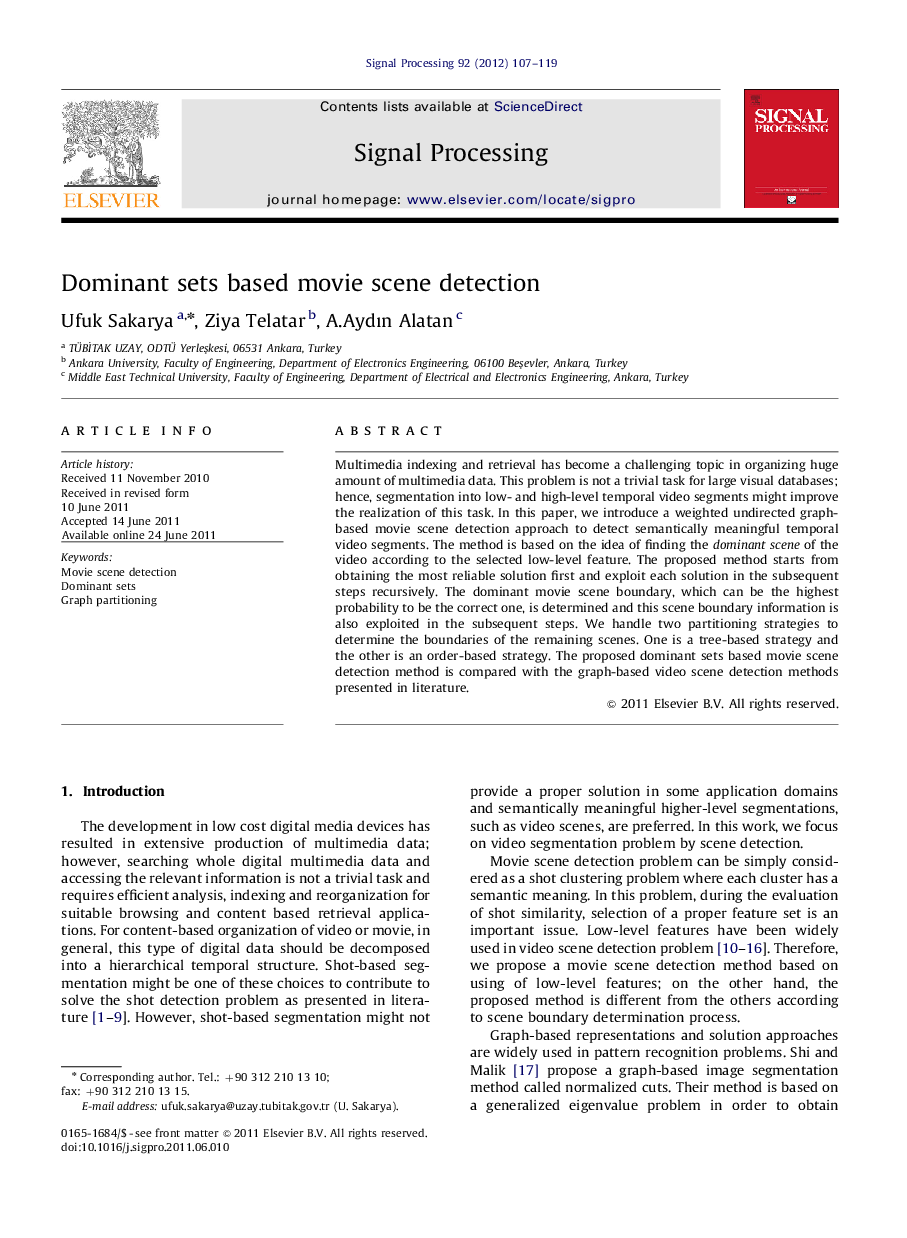| Article ID | Journal | Published Year | Pages | File Type |
|---|---|---|---|---|
| 563488 | Signal Processing | 2012 | 13 Pages |
Multimedia indexing and retrieval has become a challenging topic in organizing huge amount of multimedia data. This problem is not a trivial task for large visual databases; hence, segmentation into low- and high-level temporal video segments might improve the realization of this task. In this paper, we introduce a weighted undirected graph-based movie scene detection approach to detect semantically meaningful temporal video segments. The method is based on the idea of finding the dominant scene of the video according to the selected low-level feature. The proposed method starts from obtaining the most reliable solution first and exploit each solution in the subsequent steps recursively. The dominant movie scene boundary, which can be the highest probability to be the correct one, is determined and this scene boundary information is also exploited in the subsequent steps. We handle two partitioning strategies to determine the boundaries of the remaining scenes. One is a tree-based strategy and the other is an order-based strategy. The proposed dominant sets based movie scene detection method is compared with the graph-based video scene detection methods presented in literature.
► A graph-based approach to detect semantically meaningful temporal video segments. ► Finding the dominant scene of the movie according to the selected low-level feature. ► A novel framework to overcome the problem in detecting both stationary and action scenes. ► The content-based adaptive selection approach for temporal decay parameter value. ► An adaptive approach for determining the number of first detected scenes for the order-based.
